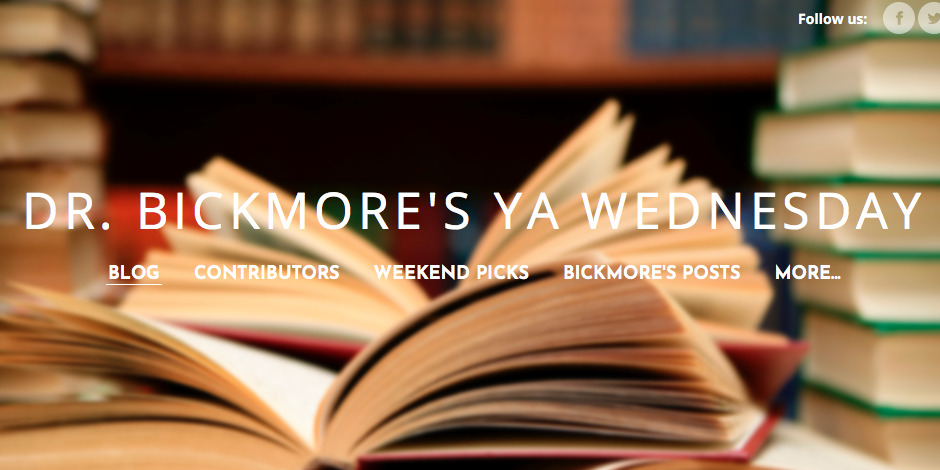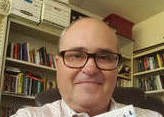Thanks to Dr. Bickmore for this insightful analysis and interview!
I love it when I come across a novel from a small press that is worthy of a bigger audience. This is without question the case with Maddy Lederman’s novel Edna in the Desert.
Introducing Maddy Lederman and EDNA IN THE DESERT, by Dr. Bickmore
I have to admit that the tag line on the cover (Can a Beverly Hills teen survive without a smart phone, Internet, and TV?) caught my eye and caused me to ponder my addiction to social media, not to mention the way my students and graduate students seem to be completely connected to their various devices. I remember teaching before cell phones were an issue in the classroom and –after the change. It was perfectly timed with when I was out of the classroom for three years working on my doctorate. When I returned the cell phone crisis was in full swing and many schools and districts didn’t have policies that addressed the issue constructively. In my opinion, it was too late. I used to joke that the new way I could tell that students weren’t paying attention was that their hands were under the desk working away on their texting skills. Before that, it was sneaking notes or just doodling.
Lederman poses a situation that more of us would like to see imposed on some of our nonresponsive teens. A forced hiatus from technology. As adolescent seemed locked on their various devices, they appear lost in their particular worlds. In reality, they are probably more attuned to the world around them than we imagine or would like to give them credit for taking in. Nevertheless, is there something to be gained with a camping trip without technology? What would a 10 day vacation be like if both parents and kids were untethered from technology for the duration of the trip? Lederman’s character, Edna, takes a pause that is much longer than she thinks she can survive. A forced timeout for the summer with her Grandmother in the desert opens her mind to other forms of information input—both emotional and pragmatic.
Lederman’s text explores a teen confronting relationships while the tether to technology is severed. I think this is a novel that will help students and teachers start conversations about the ways the digital world has altered our culture, our modes of communication, our access to information, and our relationships with people; those within our own generation and across others. DrB: What did your novel start with, a plot, a character, or a central question? ML: EDNA IN THE DESERT started with both a central question and the characters simultaneously, after I’d interviewed a man who lived in a remote part of the Mojave Desert, about thirty miles from Joshua Tree, CA. I lived in the desert for several years and, writing for a local magazine, I got to know the region. There are people there who want nothing to do with the outside world; they don’t know what Facebook or Twitter is. This man lived without cell phone service, and he did not own a computer or a TV. I wondered how a teen in our society might function this way, and that was the first time I’d thought about the girl who eventually became Edna. Her grandparents also came from getting to know this man, though their reasons for being so isolated are different than his were. My central question, “How is smart phone use changing us?” came to me at about the same time, when I noticed that my friends’ teenage kids don’t bother to look up from their phones to say, “Hello,” and that this behavior is tolerated as normal. The human brain has evolved over thousands of years, and this sudden trend of spending so many hours staring into little screens must affect people, especially teens whose brains are still developing. I worry about what’s happening to our culture and to the simple act of having a conversation. People will start tapping into their phones and say they’re listening, but they’re not responding to non-verbal cues like body language and facial expressions. They’re not as sensitive to tone of voice, and they’re not as likely to formulate a response while typing to someone else. In EDNA IN THE DESERT, Edna tries to get to know a boy without a phone. She cannot simply text him emojis or like his posts on Facebook or Instagram. She has to learn about him from being with him in real time, and she has to try to make conversation that will keep him interested. DrB: What do you try to accomplish when you visit schools or conferences? ML: I talk with students about Edna’s story, how social media influences their lives, how much time they spend on it, and what are the advantages and disadvantages in various communication scenarios. After the discussion, I lead a writing workshop with a series of prompts from which the students write in short spurts, and they read their work aloud after each round, or a few at a time in larger groups. This is always fun, and the kids are often very supportive of one another. By the end of the workshop, each student has the broad strokes of their own story; the setting, characters, and conflict. I make the point that no matter what career they pursue, creative writing is important practice. People who can’t express themselves well cannot be leaders in any field. DrB: Have you worked on any award communities? ML: I was a Juror on the 2016 Scholastic Writing Awards Jury. DrB: What was that experience like? ML: I loved it. It was hard to believe that such intense stories came from writers who are so young, and it was even harder to judge the contest: Every entry had its own strengths. Some were hilarious and others were so sad they brought me to tears. There was an incredible variety of topics and talent. Scholastic is doing a great job highlighting teen writers, and I’m proud to have joined their jury. DrB: Do you get many letters or emails from your readers? ML: I do. Most ask me when EDNA IN THE DESERT will become a movie (I don’t know the answer) or if there will be a sequel. There will be, but it may not be a sequel in the traditional sense because Edna will be older and in a different phase of her life. I hear from more girls than boys, and I get many questions about Johnny, the boy Edna has a crush on. There’s a distance from Johnny in the story, and we learn more about his moral compass than anything else. DrB: What jobs did you do and do any of them influence how or what you write? ML: I’ve always been interested in story telling. I have an MFA in Theater from Brooklyn College, and I’ve worked in film and TV all my life. I think this has influenced my writing in that I like to explore things visually and keep a story moving. In EDNA IN THE DESERT, Edna’s father is a successful film director, which was a good fit for the story. Edna lives like a Kardashian or a child of one of The Real Housewives of Beverly Hills, and this made the transition to her grandparents’ desert life more challenging than it might have been for a different girl. DrB: Do you have a writing routine? ML: I start early in the morning, as close to waking up as possible and before I might be distracted by the logistics of errands and chores. I write for four to six hours a day when I’m in writing mode. DrB: Do you ever have epiphanies while writing? ML: Yes! It’s one thing I love about doing it. DrB: How long does it take you to write a book? ML: I worked on EDNA IN THE DESERT for about a year, though it was broken up a few months at a time. DrB: Did you research settings, characters types, or topic for your works? ML: Living in the desert was a natural form of research, and I read books about families that settled in the Mojave to deepen my knowledge for some of the characters. I also read a variety of Coming of Age and Young Adult novels, both old and new. DrB: Do you belong to a writing group or do you have trusted others who read your drafts? ML: I find the camaraderie of writing groups is enriching and helpful, but having someone read an entire draft of a novel is a tall order. I’m fortunate to have friends in publishing who were able to pass on my manuscript to editors I don’t know. Getting good feedback from them was more meaningful to me than family or friends who would naturally want to be encouraging of anything I pursue. DrB: What is the story of getting EDNA IN THE DESERT published? Did you have an agent? ML: EDNA IN THE DESERT started out as a short story I wrote when I was asked to be in a spoken word event at The Hi-Desert Playhouse in Joshua Tree, and afterwards the story was published in The Sun Runner, a magazine about California deserts. So many people wanted to know what was going to happen to Edna, it inspired me to continue the project, but I’d never written a novel. The feedback I got when I shared chapters at writing workshops prompted me to pursue publication. I didn’t get an agent, but I did find a small press to publish the book. Weighing the pros and cons of a small house versus a big house in the changing world of publishing was complicated, but I think the book found a good home. I love that it’s in so many schools now, and that adults are enjoying it as well, especially those nostalgic for simpler times.
Originally published 3/31/17 on YA Wednesday. |


